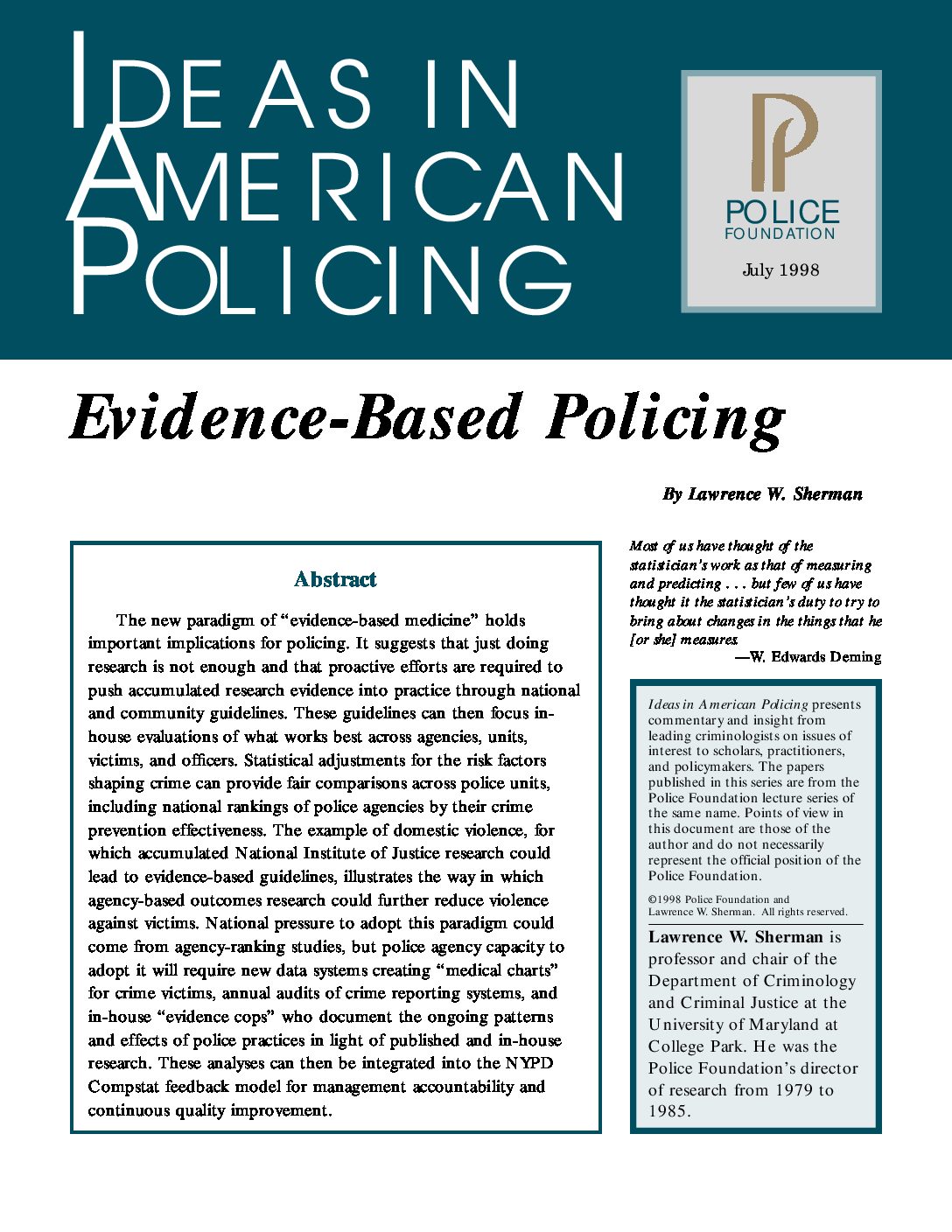Publication Date
July 1998
Author(s)
Lawrence W. Sherman, Ph.D.
Recommended Citation
Sherman, L. (1998). Evidence-based policing. Washington, DC: National Policing Institute. https://www.policinginstitute.org/publication/evidence-based-policing/
Series
Strategic Priority Area(s)
Topic Area(s)
Contact
For general inquiries, please contact us at info@policinginstitute.org
Share
Series
Strategic Priority Area(s)
Topic Area(s)
Contact
For general inquiries, please contact us at info@policefoundation.org
Share


